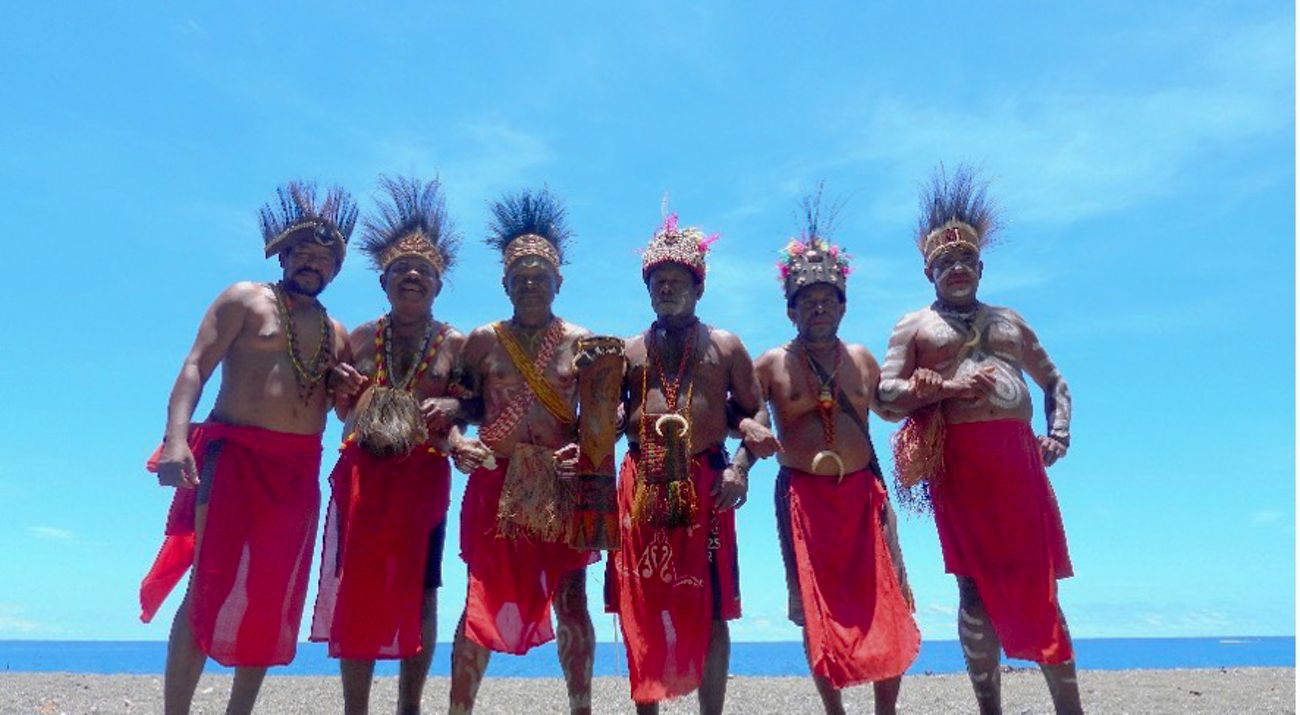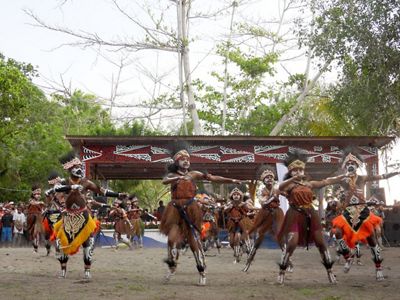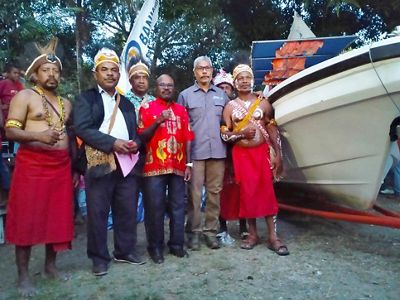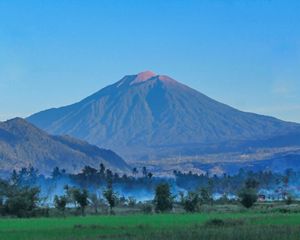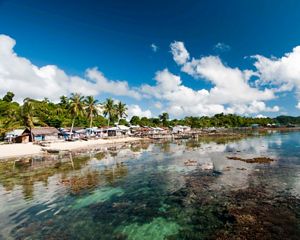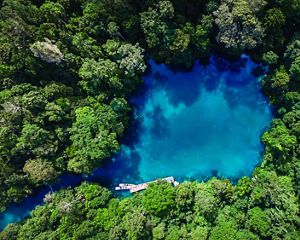Munara Beba: How the Biak Karon Tribe Protects the Sea
By: Maria Adityasari, Communication Specialist YKAN & Nugroho Arif Prabowo, Capacity Development Technical Lead YKAN
Quote
Kobe oser, kosambrab ma kobawes. We are united, we are strong, we are rising.
The passionate callings in the Biak language adorn the corners of an open field in Werur Village, Bikar District; and Sauran Village, Sausapor District, Tambrauw Regency, Southwest Papua. Written on the giant billboard welcoming everyone who enters the “Munara Beba Byak Karon Festival” arena, which too place from 22-25 March 2023.
The rhythmic sound of the tifa starts the faint local language singing. Hundreds of spectators moved towards the right side of the stage, looking for the source of the sound. A group of youths dressed in traditional clothing and decorated with typical Biak paintings can be seen stomping their feet simultaneously. Dancing in circles while still clapping tifa in hand. Adding enthusiasm as the tempo get faster. Footsteps were replaced with high jumps full of action. This attraction is for beginners. A sign that the Munara Beba Festival has begun.
For four days, each visitor was invited to explore the rich variety of Biak Karon customs which were displayed through various exhibition stands and various competitions. There are traditional boat rowing competitions, traditional fishing, the Yosim Pancar Dance, folk songs, body painting and speeches in the Biak language.
Read: Sustainable Forest Management For the Future of Livable Earth
The people of Biak Karon are invited to return ini remembrance of the various customs and traditions of their ancestors, the Biak people, who landed in Tanah Karon. This is what the Biak people call the entire north coast of Tambrauw Regency. They explored the seas and arrived in this area in the 16th century.
To this day, there are six clans in Biak Karon, namely Mar, Mambrasar, Paraibabo, Yappen, Mirino nd Mayor. Each group of carriages also seemed enthusiastic about participating in every existing competition.
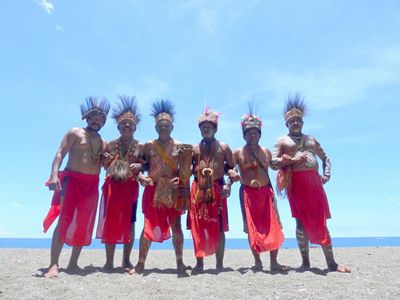
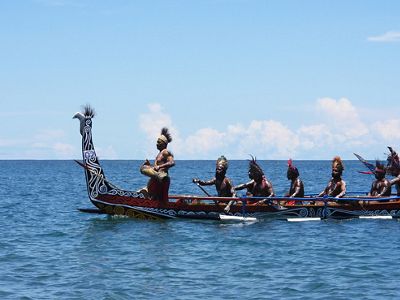
“For the first time, all the Biak Karon clans unite and help each other to prepare everything. We thank Yayasan Konservasi Alam Nusantara/YKAN, whom has made efforts to make this day possible," said Hans Mambrasar, a community leader in Biak Karon, through the loudspeaker which was always in hand.
Through the loudspeaker, he personified the enthusiasm of the contestants, while at the same time constantly reminding that this moment was not to show the greatest clan, but to reinterpret ancestral customs and traditions that were gradually disappearing from everyday life.
Within two weeks, each clan made a traditional boat. “Each clan has its own boat pattern and has a special meaning. The seabird, for example, is the symbol of the Mirino clan and has a meaning as a guide. Or, the sea snake which is the symbol of the Paraibabo clan and in the past has been a marker of victory in war. If the snake rises to the surface of the sea and then sinks again before going to war, it means we will win. But if we just go around in circles, it means we can't go to war," explained Falen Paraibabo, Head of the Paraibabo clan.

Throughout this cultural festival, various traditional crafts and culinary arts are also exhibited. Among them are processed products from women's groups assisted by YKAN. There are five assisted women's groups spread across Werwaf Village, namely the Mambesak Group, Suyam Village, namely the Mandawan Group and Mar Group, Bukit Village and the Kobe Oser Group.
YKAN assisted the development of processed products so that they have higher economic value by making variations in taste, product diversification, as well as in terms of packaging and the form of products sold. Among them are various processed products from kasbi (cassava), coconut oil, VCO oil, and fish sauce. The development of this product is nothing but based on the wealth of natural resources available in the local environment.

“Tambrauw is rich with tuna. Rather than (the condition) of the fish being spoiled due to the distance to the city being far away and electricity constraints for storage, it is better to make it into sambal which can last longer and has a sale value," said Salomina Tjoe, Livelihood Officer of YKAN, giving an example. In addition to providing training for capacity building, this women's group assisted also received training on financial literacy and women's leadership.
Strengthening traditions and conservation
The development of a water conservation area in Tambrauw Regency is part of the Maksegara waters conservation area (across Sorong and Tambrauw Regencies) covering an area of 135,302 hectares which is supported by the Provincial Government of West Papua. Collaborating with YKAN and other development partners, the Provincial Government of West Papua is committed to assisting indigenous and tribal peoples (MHA) in developing and managing their customary management areas in a sustainable manner.
MHA Biak Karon has also received the rights to manage 12,000 hectares of water area based on Regional Regulation of West Papua Province Number 13 of 2019. And this cultural festival is part of strengthening the management of MHA Biak Karon waters.
On this occasion, YKAN also handed over a dinggi (speed boat) to support MHA territorial waters surveillance activities. This boat, which is managed by the Farus Sem Monitoring Community Group, is a way to protect MHA waters from fishing practices that are not environmentally friendly and overfishing.
The festival was closed by confirming the commitment of Biak Karon residents to preserve the sea through the sasisen closing ceremony (sasi). The sasi is carried out to protect the biota around it, namely shrimp, sea cucumbers, bats, turtles, corals, bia matabulan (moon eye snails), and red lola snails.

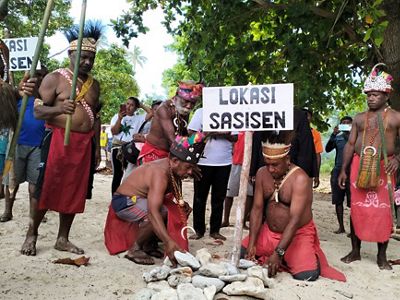
“Utilizing nature wisely, that's what our ancestors taught us. Through this festival and the return of the sasi tradition, it is an effort for us to always take care of nature for today and in the future," ended the Head of the Biak Tribal Council, Karon Yunus Rumansara.


